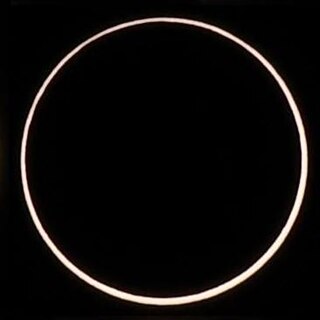| Solar eclipse of September 1, 2016 | |
|---|---|
 From L'Étang-Salé, Réunion | |
| Type of eclipse | |
| Nature | Annular |
| Gamma | −0.333 |
| Magnitude | 0.9736 |
| Maximum eclipse | |
| Duration | 186 s (3 min 6 s) |
| Coordinates | 10°42′S 37°48′E / 10.7°S 37.8°E |
| Max. width of band | 100 km (62 mi) |
| Times (UTC) | |
| Greatest eclipse | 9:08:02 |
| References | |
| Saros | 135 (39 of 71) |
| Catalog # (SE5000) | 9544 |
An annular solar eclipse occurred at the Moon's ascending node of orbit on Thursday, September 1, 2016,[1][2][3][4] with a magnitude of 0.9736. A solar eclipse occurs when the Moon passes between Earth and the Sun, thereby totally or partly obscuring the image of the Sun for a viewer on Earth. An annular solar eclipse occurs when the Moon's apparent diameter is smaller than the Sun's, blocking most of the Sun's light and causing the Sun to look like an annulus (ring). An annular eclipse appears as a partial eclipse over a region of the Earth thousands of kilometres wide. Occurring about 5.4 days before apogee (on September 6, 2016, at 19:45 UTC), the Moon's apparent diameter was smaller.[5]
Annularity was visible from parts of Gabon, Congo, Democratic Republic of the Congo, Tanzania, Mozambique, Madagascar, and Réunion. A partial eclipse was visible for most of Africa and parts of Antarctica.
- ^ "September 1, 2016 Annular Solar Eclipse". timeanddate. Retrieved 12 August 2024.
- ^ Cite error: The named reference
spacewas invoked but never defined (see the help page). - ^ Cite error: The named reference
physwas invoked but never defined (see the help page). - ^ Cite error: The named reference
usawas invoked but never defined (see the help page). - ^ "Moon Distances for London, United Kingdom, England". timeanddate. Retrieved 12 August 2024.
